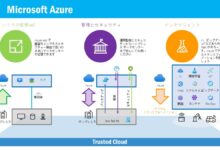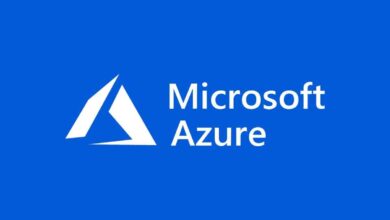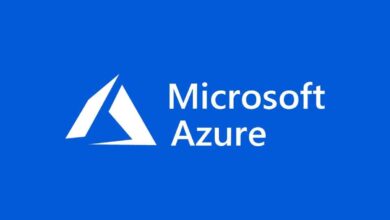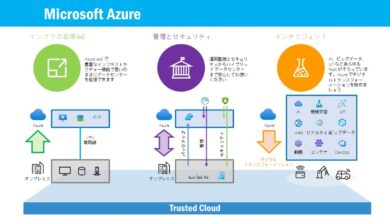Azure Portal: 7 Powerful Features You Must Master Now
Unlock the full potential of cloud management with the Azure Portal—your central hub for controlling Microsoft’s vast cloud ecosystem. Simple, powerful, and intuitive, it’s time to master it.
What Is the Azure Portal and Why It Matters

The Azure Portal is Microsoft’s web-based interface for managing cloud resources on Microsoft Azure. It provides a graphical user interface (GUI) that allows users to create, configure, monitor, and manage services like virtual machines, databases, networking, and storage—all from a single dashboard. Unlike command-line tools or APIs, the portal is designed for accessibility, making it ideal for beginners and seasoned professionals alike.
Core Definition and Purpose
The Azure Portal, officially known as the Azure portal, serves as the primary control center for Azure services. It enables users to interact with Azure resources without needing deep coding knowledge. Whether deploying a virtual machine or setting up a complex AI pipeline, the portal streamlines operations through visual workflows and guided experiences.
- Acts as a centralized management console for all Azure services
- Supports role-based access control (RBAC) for team collaboration
- Integrates with Azure Monitor, Security Center, and Cost Management
“The Azure Portal is not just a dashboard—it’s a command center for modern cloud operations.” — Microsoft Azure Documentation
Evolution of the Azure Portal
Originally launched in 2014 as the ‘Azure Preview Portal,’ it replaced the older Azure Management Portal. Over the years, Microsoft has continuously enhanced its performance, design, and functionality. Major updates include improved load times, responsive UI, and deeper integration with DevOps tools.
One significant milestone was the introduction of the ‘Azure Resource Manager’ (ARM) model in 2015, which allowed for template-driven deployments and better resource grouping. This shift made the Azure Portal more powerful than ever, enabling infrastructure-as-code practices directly from the interface.
Navigating the Azure Portal Interface
Understanding the layout of the Azure Portal is the first step toward mastering cloud management. The interface is clean, responsive, and highly customizable, designed to reduce complexity while offering access to thousands of services.
Main Dashboard and Layout Components
When you log in to the azure portal, you’re greeted with a customizable dashboard. This dashboard can be personalized with tiles representing frequently used services, metrics, or alerts. Key components include:
- Navigation Menu (Hamburger Menu): Located on the left, it provides access to all Azure services like Virtual Machines, Storage Accounts, and App Services.
- Search Bar: A powerful tool to quickly find services, resources, or settings across Azure.
- Notification Center: Displays alerts, deployment statuses, and system messages.
- Subscription Filter: Allows switching between multiple Azure subscriptions if you have access to more than one.
Users can pin important resources to the dashboard for quick access, making it easier to monitor critical workloads at a glance.
Customizing Your Workspace
One of the standout features of the Azure Portal is its high degree of customization. You can create multiple dashboards tailored to different roles—such as a DevOps dashboard, security monitoring panel, or cost analysis view.
To customize your workspace:
- Click ‘Dashboard’ > ‘Edit’ to enter customization mode.
- Add, resize, or remove tiles based on your needs.
- Save different dashboard layouts for various teams or projects.
This flexibility makes the Azure Portal suitable for diverse organizational roles—from developers to IT administrators and finance teams tracking cloud spending.
Managing Resources with the Azure Portal
At the heart of the Azure Portal is resource management. Whether you’re provisioning a new virtual machine or scaling a web app, the portal provides intuitive tools to handle these tasks efficiently.
Creating and Deploying Resources
To create a new resource, click the ‘+ Create a resource’ button on the portal homepage. This opens the Azure Marketplace, where you can browse hundreds of pre-configured solutions—from AI models to enterprise-grade databases.
The deployment process typically follows these steps:
- Select the service (e.g., Virtual Machine, SQL Database).
- Choose a deployment model (Resource Manager is recommended).
- Configure settings such as region, size, networking, and authentication.
- Review and deploy with a single click.
Behind the scenes, the Azure Portal generates an ARM template, allowing for repeatable and automated deployments. This is especially useful for maintaining consistency across development, testing, and production environments.
Organizing Resources with Resource Groups
Resource groups are logical containers that help organize related resources. For example, all components of a web application—VMs, databases, and networks—can be grouped together.
Benefits of using resource groups include:
- Easier management and monitoring of related services
- Simplified permission assignment via RBAC
- One-click deletion of entire environments (use with caution!)
It’s a best practice to name resource groups clearly (e.g., ‘prod-webapp-eastus’) and apply tags for additional metadata like cost center or environment type.
Monitoring and Diagnostics via Azure Portal
Effective cloud management isn’t just about deployment—it’s also about visibility. The Azure Portal integrates robust monitoring tools to help you track performance, troubleshoot issues, and optimize costs.
Using Azure Monitor and Metrics Explorer
Azure Monitor is the central service for collecting telemetry data from your resources. Accessible directly from the portal, it provides real-time insights into CPU usage, memory, disk I/O, and network traffic.
With Metrics Explorer, you can:
- Visualize performance trends over time
- Create custom charts for specific metrics
- Set up alerts when thresholds are exceeded
For example, you can configure an alert to notify your team if a virtual machine’s CPU usage exceeds 90% for more than five minutes.
Log Analytics and Querying with Kusto
Beyond basic metrics, the Azure Portal allows deep diagnostic analysis through Log Analytics. This feature uses the Kusto Query Language (KQL) to search through logs generated by applications, operating systems, and Azure services.
Common use cases include:
- Investigating failed login attempts
- Tracking application errors in App Services
- Analyzing network traffic patterns for security audits
While KQL has a learning curve, the portal includes a query editor with auto-suggestions and sample queries to help users get started quickly.
Security and Access Control in Azure Portal
Security is paramount in cloud environments. The Azure Portal provides comprehensive tools to manage identity, enforce policies, and protect sensitive data.
Role-Based Access Control (RBAC)
RBAC allows administrators to assign granular permissions to users, groups, or applications. Instead of giving full access, you can grant specific roles such as:
- Reader: View resources but cannot make changes.
- Contributor: Create and manage resources but cannot assign roles.
- Owner: Full control, including role assignment.
These roles can be applied at the subscription, resource group, or individual resource level, ensuring least-privilege access.
Implementing Azure Policy and Security Center
Azure Policy helps enforce organizational standards by defining rules for resource configuration. For example, you can create a policy that blocks the creation of public storage accounts or requires encryption at rest.
Meanwhile, Microsoft Defender for Cloud (formerly Azure Security Center) provides unified security management and advanced threat protection. From the Azure Portal, you can:
- View security recommendations
- Detect vulnerabilities in VMs and containers
- Respond to active threats with automated playbooks
“Security is not a feature—it’s a continuous process. The Azure Portal makes it actionable.” — Azure Security Best Practices Guide
Automation and Scripting Through Azure Portal
While the GUI is user-friendly, the Azure Portal also supports automation for repetitive tasks, reducing human error and increasing efficiency.
Using Azure Cloud Shell
The Azure Portal includes an integrated terminal called Azure Cloud Shell. It’s a browser-based shell that supports both Bash and PowerShell, pre-authenticated with your Azure credentials.
You can use Cloud Shell to:
- Run CLI commands (az) or PowerShell scripts (Azure PowerShell)
- Edit files using nano or vim
- Persist scripts in an attached storage account
This eliminates the need to install Azure CLI locally and ensures consistent tooling across teams.
Exporting Templates and Using Automation Options
One of the most powerful features of the Azure Portal is the ability to export resource configurations as ARM templates. After deploying a solution, you can go to the resource group and select ‘Automation’ > ‘Export template’ to download the JSON definition.
This enables:
- Recreating environments in different regions
- Version-controlling infrastructure in Git
- Integrating with CI/CD pipelines via Azure DevOps
Additionally, the portal supports Logic Apps and Automation Accounts for scheduling tasks like VM shutdowns or patching workflows.
Cost Management and Optimization in Azure Portal
Cloud costs can spiral out of control without proper oversight. The Azure Portal includes built-in tools to track spending, forecast budgets, and identify savings opportunities.
Using Azure Cost Management + Billing
This service provides detailed reports on usage and charges across subscriptions. You can break down costs by resource, service, department, or tag.
Key features include:
- Daily cost updates with visual dashboards
- Budget creation with alert thresholds
- Forecasting future spending based on historical trends
For example, you can set a monthly budget of $1,000 and receive email alerts when spending reaches 80% of that limit.
Identifying Cost-Saving Opportunities
The Azure Portal also offers recommendations for reducing costs. These include:
- Identifying underutilized virtual machines that can be resized or shut down
- Suggesting reserved instances for long-running workloads (up to 72% savings)
- Highlighting unattached disks or idle load balancers
These insights are accessible through the ‘Cost Management + Billing’ section and are updated regularly based on usage patterns.
Integrating DevOps and CI/CD with Azure Portal
The Azure Portal is not just for infrastructure—it’s also a launchpad for modern software delivery practices. It integrates seamlessly with DevOps tools to support continuous integration and deployment.
Connecting to Azure DevOps and GitHub
From the portal, you can quickly set up pipelines that deploy code from Azure Repos or GitHub to App Services, Kubernetes clusters, or VMs. The ‘Deployment Center’ in App Services guides you through connecting your repository and configuring build triggers.
This integration supports:
- Automatic deployments on every code push
- Staging slots for zero-downtime releases
- Rollback capabilities in case of failures
Using App Services and Deployment Slots
Azure App Services allow hosting web applications without managing servers. Through the Azure Portal, you can configure deployment slots—separate environments like ‘staging’ and ‘production’—that share the same app settings but run different code versions.
Benefits include:
- Testing updates in isolation before swapping to production
- Reducing risk and downtime during deployments
- Support for custom domains, SSL, and scaling rules
This makes the Azure Portal a critical tool for development teams practicing agile and DevOps methodologies.
What is the Azure Portal?
The Azure Portal is a web-based interface provided by Microsoft for managing cloud resources on Azure. It offers a graphical dashboard to deploy, monitor, and manage services like virtual machines, databases, and networking tools.
How do I access the Azure Portal?
You can access the Azure Portal by visiting portal.azure.com and signing in with your Microsoft account or organizational credentials linked to an Azure subscription.
Is the Azure Portal free to use?
Yes, the Azure Portal itself is free to access. However, the resources you create and manage through it (like VMs or storage) incur charges based on usage. You can use the Azure Free Account to explore services at no cost for 12 months.
Can I automate tasks in the Azure Portal?
Absolutely. The Azure Portal supports automation through Azure Cloud Shell, ARM templates, Logic Apps, and integration with Azure DevOps and GitHub for CI/CD workflows.
How do I secure my Azure resources via the portal?
You can secure resources using Role-Based Access Control (RBAC), Azure Policy for compliance, and Microsoft Defender for Cloud for threat detection and vulnerability management—all accessible directly from the Azure Portal.
Mastering the Azure Portal is essential for anyone working with Microsoft Azure. From intuitive navigation and resource management to advanced monitoring, security, and cost control, it serves as the central nervous system of your cloud environment. With powerful automation, DevOps integration, and real-time insights, the portal empowers teams to build, deploy, and manage applications efficiently. Whether you’re a beginner or a cloud expert, leveraging its full capabilities will drive better performance, security, and cost optimization in your Azure journey.
Recommended for you 👇
Further Reading:









